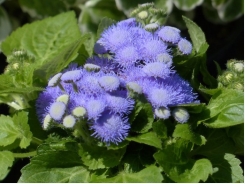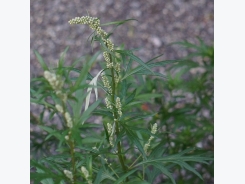How to Grow Johnny Jump Up

There are few flowers so exquisite as the tiny Johnny Jump Up. With its dainty petals and heart shaped leaves, what's not to love? It really is the darling of annuals.
Some describe the bright countenance of Johnny Jump Up as a miniature face. It's not a face that can be ignored. In shades of purples, blues, yellows, and whites, it is sure to catch your eye in spite of its small size.
While such a face might demand lots of attention, the Johnny Jump Up (Viola tricolor) is actually quite unassuming. It is easy to grow and even easier to maintain. Its versatility makes it a charmer in beds, borders, or containers. Some even find the Johnny Jump Up so cute they just want to eat it. And that's OK, because it is an edible flower. It's an eye catching addition to small indoor or outdoor herb gardens where you can snip a Johnny Jump Up flower to eat right along with your rosemary or thyme.
How to Grow Johnny Jump Ups
Seeds for your Johnny Jump Up plant can be sown direct early in the spring. Or, you can start seeds indoors six to eight weeks before the last frost. Cover seeds with an eighth of an inch of soil, water them well, and keep them warm. Johnny Jump Up will take awhile to germinate, so be patient. They are worth the wait. If you would prefer, transplants are readily available at most nurseries and garden centers too.
Johnny Jump Up delights in an organically rich soil that drains well. Johnny Jump Up enjoys sunshine, too. Be sure to provide great soil, lots of sun, and not too much shade.
Water your seeds and young plants thoroughly. Keep the soil around the seeds and transplants consistently on the moist side. Even a mature Johnny Jump Up will want lots to drink. Plenty of water will keep your Johnny Jump Up from wilting or drying out in the sun. In spite of its sun-loving nature, Johnny Jump Up prefers cool temperatures. Water in the soil around the plant will help keep the plant cooler - even in full sun.
Johnny Jump Up blooms from early spring all the way through fall, which is yet another lovable quality. Just make sure to deadhead this plant regularly to encourage continuous blooms. Johnny Jump Up will self seed too, so you may find that new plants will appear year after year. In some warmer areas, Johnny Jump Up will behave as a perennial. Either way, you can plan on enjoying Johnny Jump Up every spring.
Johnny Jump Up Pests and Problems
Johnny Jump Up is generally a hardy plant. It is sometimes prone to many of the pests and diseases related to moisture and humidity. Snails and slugs will munch on its leaves. These pests can be lured away from your plants with a shallow dish full of beer lowered into the ground so the rim is at ground level.
Mildews and fungus, which are common diseases for Johnny Jump Up, can be avoided by watering your plants at the base of the stem. This way, rather than drenching the plant, the water is directed to the roots for good use. Another tip is to water early in the day to allow the sun to dry your plant before dark.
You may find that in spite of your best efforts, a plant or two may succumb to infection. Remove infected plants to keep adjacent plants healthy.
Johnny Jump Up Varieties to Try
'Helen Mount' is a traditional Johnny Jump Up that graces the garden in tiny three quarter inch purple, lavender, and white blooms.
'Sorbet' are compact plants that offer a wide variety of pastel colors.
Có thể bạn quan tâm
Phần mềm

Phối trộn thức ăn chăn nuôi

Pha dung dịch thủy canh

Định mức cho tôm ăn

Phối trộn phân bón NPK

Xác định tỷ lệ tôm sống

Chuyển đổi đơn vị phân bón

Xác định công suất sục khí

Chuyển đổi đơn vị tôm

Tính diện tích nhà kính

Tính thể tích ao hồ



 How to Grow Spiderwort
How to Grow Spiderwort  How to Get Rid of Invasive Mugwort
How to Get Rid of Invasive Mugwort